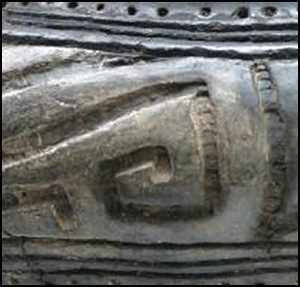Crossref Citations
This article has been cited by the following publications. This list is generated based on data provided by
Crossref.
Quinn, Colin P.
Ciugudean, Horia
and
Beck, Jess
2020.
The politics of placing the dead in Bronze Age Transylvania.
Journal of Archaeological Science: Reports,
Vol. 34,
Issue. ,
p.
102574.
Wang, Mixiao
2020.
Bronze Culture Image Recognition System based on Artificial Intelligence and Network Technology.
Journal of Physics: Conference Series,
Vol. 1574,
Issue. 1,
p.
012097.
Holland-Lulewicz, Jacob
and
Ritchison, Brandon T.
2021.
How Many Dates Do I Need?.
Advances in Archaeological Practice,
Vol. 9,
Issue. 4,
p.
272.
Kanne, Katherine
2022.
Riding, Ruling, and Resistance.
Current Anthropology,
Vol. 63,
Issue. 3,
p.
289.
Bebber, Michelle R.
Buchanan, Briggs
Holland-Lulewicz, Jacob
and
Hart, John P.
2022.
Refining the chronology of North America’s copper using traditions: A macroscalar approach via Bayesian modeling.
PLOS ONE,
Vol. 17,
Issue. 4,
p.
e0266908.
Polányi, Tamás
2022.
The rise of idiôtês: Micro-politics of death and community reproduction in Bronze Age Hungary.
Journal of Anthropological Archaeology,
Vol. 68,
Issue. ,
p.
101445.
Buchanan, Briggs
Kilby, J. David
LaBelle, Jason M.
Surovell, Todd A.
Holland-Lulewicz, Jacob
and
Hamilton, Marcus J.
2022.
Bayesian Modeling of the Clovis and Folsom Radiocarbon Records Indicates a 200-Year Multigenerational Transition.
American Antiquity,
Vol. 87,
Issue. 3,
p.
567.
2022.
Isis Current Bibliography of the History of Science and Its Cultural Influences 2022.
Isis,
Vol. 113,
Issue. S1,
p.
1.
Molloy, Barry
2023.
Was There a 3.2 ka Crisis in Europe? A Critical Comparison of Climatic, Environmental, and Archaeological Evidence for Radical Change during the Bronze Age–Iron Age Transition.
Journal of Archaeological Research,
Vol. 31,
Issue. 3,
p.
331.
Quinn, Colin P.
2024.
Settlement ecology of Bronze Age Transylvania.
Frontiers in Human Dynamics,
Vol. 6,
Issue. ,
Atalla, Amal Diab Ghanem
Mostafa, Wafaa Hassan
and
Ali, Mohamed Saad Saleh
2024.
Inspiring nurses’ sustainability mindset: Exploring the Mediating Role of Organizational Culture on the relationship between Pro-social Leader behaviors and nurses’ sustainability consciousness.
BMC Nursing,
Vol. 23,
Issue. 1,
Golitko, Mark
Riebe, Danielle J.
Kreiter, Attila
Duffy, Paul R.
and
Parditka, Györgyi
2024.
Exploring the limits of the provenience postulate: chemical and mineralogical characterization of Bronze Age ceramics from the Great Hungarian Plain.
Archaeological and Anthropological Sciences,
Vol. 16,
Issue. 10,
Ashley, Nicholas
and
Parumasur, Sanjana Brijball
2024.
The relationship between organisational culture and employee engagement in private hospitals.
Corporate Governance and Organizational Behavior Review,
Vol. 8,
Issue. 1,
p.
68.



